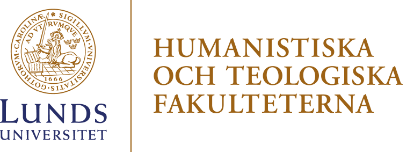Kurs
Kurskod:
EUHR12
Högskolepoäng:
15
Programtillhörighet:
Ingår i
Masterprogram inom Europastudier med humanistisk profil
OBS! Kursen ges inte innevarande termin. Informationen nedan är för höstterminen 2024. Kursen har även givits tidigare. Välj termin ovan för mer information!
Kurstillfälle:
höstterminen
2024
Studiesätt:
heltid,
dagtid
Kursperiod:
2024-11-01 – 2025-01-19
Kursspråk:
engelska
- Schemat är ännu inte klart. Mer information visas 2024-06-20.
- Bibliotekets ämnesguide Europastudier
Beskrivning
The European Union (EU) has become almost synonymous with Europe itself. But is this unique form of political collaboration truly “united in diversity”, as its motto claims? The course examines the various fault lines within Europe, with a special focus on the contemporary, enlarged Union, and aims to highlight the relationship between various parts of the continent, separated along historical, cultural, religious, political, and strategic criteria. Old Europe can refer to the nucleus of the EU founding states, as much as to the core cultural points of the Western civilization. New Europe may include the new members of the EU since 2004 or refer to the entire stretch of the Union, which has been transformed in its entirety by the enlargement. Finally, Non Europe is both a contrast with the “outside” (EU’s neighbours, the other state and non-state actors in the international arena) and a definition of the “other within”, for example migrants or minority groups.
The course examines, theoretically and empirically, the significance of these divisions within contemporary Europe, their origins and raisons d’être, and the consequences they carry for the future of Europe as a region. Students are invited to engage in the academic debate about the future of Europe, by analyzing existing scenarios and creatively making their own contribution, based on scientific theories and arguments, to this discussion.
Observera!
Kursen ges inte som fristående kurs nästa termin. Den kan vara öppen för anmälan inom program eller för utbytesstudenter. Kontakta din studievägledare för mer information.
Information om anmälan
Du anmäler dig till våra kurser och program på antagning.se. Där kan du sedan följa din anmälan och kontrollera att dina meriter registrerats. Det är även där du loggar in för att svara på ditt antagningsbesked.
Ansökningsperioden är mars–april för höstterminen och september–oktober för vårterminen.
Sen anmälan
Alla utbildningar stänger för anmälan, efter att sista anmälningsdatum har passerat.
Kurser och program som har platser kvar, öppnar för sen anmälan efter första urvalet. Dessa utbildningar är märkta "Öppen för sen anmälan" på antagning.se.
International student?
Make your application in the First Admission Round at universityadmissions.se.
Application period October–January for autumn semester and June–August for spring semester.
First or Second Admission Round?
All international students are encouraged to apply to the First admission round. This round takes place many months before the start of a semester and gives students the time they need to pay their tuition fees, apply for and receive their residence permit (if required), find housing, etc.
The Second admission round is an alternative for students from EU/EEA countries as they do not need a residence permit. Non-EU/EEA students will most likely not have enough time to obtain their permit before the start of the semester. However, even EU/EEA students are advised to apply during the First admission round, as some programmes can be applied for only in the January round. Also, this provides applicants with an admission decision much earlier, which is helpful in making decisions about their studies.
Anmälnings- och studieavgifter för medborgare utanför EU/EES
Avgifterna gäller alltså inte dig som är medborgare i Sverige, något annat EU- eller ESS-land eller Schweiz. Läs mer om anmälnings- och studieavgifter.
